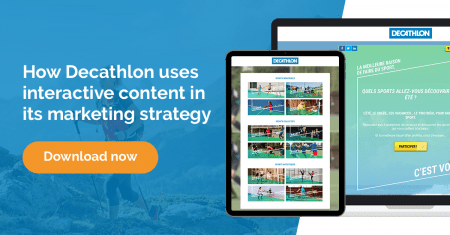Value exchange: what are consumers expecting in exchange for their personal data?
In an always-on and all-encompassing online world where data rules the roost, and the brands who master and harness the power of their data are coming out on top, consumers are increasingly aware of how their personal data is being used and stored and the term ‘value exchange’ has become a much discussed topic.
In the past decade, this trend in consumer behaviour has led to significant changes in the legal landscape with data protection laws and regulations, such as the GDPR (General Data Protection Regulation) in Europe and the CCPA (California Consumer Protection Act) in California, coming into effect to varying degrees.
In recent years, statements about data privacy and the reasons why consumers share their data have been mostly theoretical. So we’ve teamed up with Elisa Kalantarian, a former ULB and Solvay Business School of Economics & Management student currently working at Amazon, who carried out a study with 301 participants and wrote her thesis in June 2021 on the subject, titled:
“Under which conditions are consumers willing to share personal data to benefit from personalisation”
In this article we’re going to take a closer look at the conclusions of Elisa’s survey and thesis, to understand the factors that come into play when consumers are considering sharing their data with a brand.
How much are they willing to share and what do they expect in return?
Value exchange: what does the theory say?
The digital world is becoming increasingly present in our day-to-day lives, with consumers spending more and more time on the internet, so brands are capitalising on this by monetising their audience. But in a digital landscape where third-party cookies are on the way out, brands and media groups are having to look for new and innovative strategies for collecting their users’ data in order to provide them with an improved and more personalised brand experience.
Advertising Weekly defines value exchange as
a transaction between two parties that results in each party receiving something of value, some kind of benefit, from the transaction.”
And this transaction doesn’t necessarily only mean a commercial one, people are more willing to do something if they feel there is a benefit in it for them, so it is key that brands and media groups set up their marketing strategies so that they are demonstrating some kind of value exchange with their audience when it comes to data collection.
In the case of a media group or publisher, this value exchange is established by providing trustworthy, high quality and reliable information and content, combined with an impeccable brand experience. And this is how they will be fulfilling their half of the exchange. Thus encouraging the reader to share their personal data, in exchange for what the publisher has to offer.
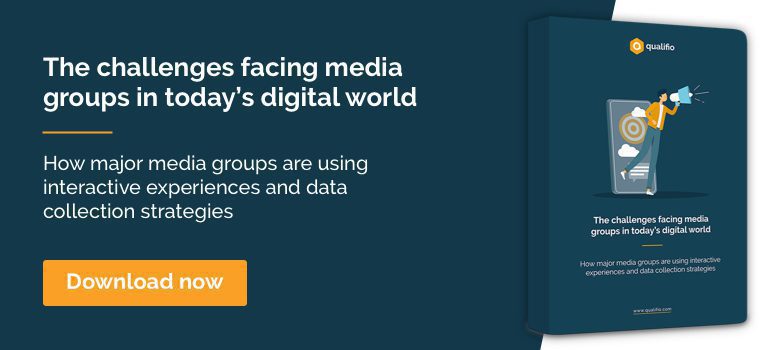
And as far as brands are concerned, their half of the value exchange is providing their audience with a brand experience that puts them at the centre of their actions, and is built on trust and a meaningful relationship.
In the upcoming cookieless world, data has been described by many as the “new oil”, so for brands, the importance of making sense of this goldmine and harnessing the power of the data they’ve collected, is essential. Keeping in mind the fact that customer data is only valuable and profitable when it is usable, brands are using the data they possess to give their audience a personalised experience in order to increase their loyalty and in turn increase profits.
Curious to find out more about the end of third-party cookies? We spoke to experts from a wide range of sectors to get their thoughts on the cookieless world. Read the article
But the central figure in all of this can not be forgotten and must be placed at the forefront of any data collection strategy: the consumer. They are increasingly aware of what is happening to the personal data they’re sharing and Elisa’s study attempts to understand their motivation for sharing data. She asked 301 participants a series of questions about under which conditions they feel ready to share their personal data.
A common calculation used by consumers to weigh up the pros and cons of sharing their data, called the “privacy calculus”, can help brands to understand the reaction of their customers. Elisa also took other factors into account in her study:
- 🫧 the transparency of how data is treated by a company
- 🛑 the control consumers have over their data
- 🫶 the trustworthiness of a company
- 🎛️ the type of data the consumer is being asked to share.
The main conclusion of this study is that consumers react differently to sharing information, depending on the type of information they’re being asked to share, and that a feeling of control will mean they’re more willing to share their information, regardless of the type of data that’s being collected.
Elisa’s study also highlights 2 other conclusions:
- 🤔 This study can help brands to understand what they need to look out for and what they need to avoid when dealing with customers sharing their data. Companies should be looking to build a strong relationship with their audience that will encourage them to share their personal data.
- 💡 Elisa’s research also warns policymakers about the gaps within the legal framework, and the problems that consumers in Europe still have in understanding the GDPR.
“Data is not about adding more to your plate. Data is about making sure you have the right things on your plate” – Paul Fleming, Education Scotland
Value exchange: what does the data say?
Elisa based her study on the following 3 hypotheses, with the following results:
1. The privacy calculus has a direct effect on the consumer’s intention to share data and this effect would be moderated by the control accorded to the consumer.
- ✅ CONFIRMED: the perceived benefits have a direct effect on the consumer’s intention to share data.
- ✅ CONFIRMED: the perceived risks have a direct effect on the consumer’s intention to share data.
- ✅ CONFIRMED: the control accorded to the consumer will moderate the effect of the perceived benefits on the consumer’s intention to share data.
- ❌ NOT CONFIRMED: the control accorded to the consumer will moderate the effect of the perceived risks on the consumer’s intention to share data.
2. The consumer’s willingness to share personal information is influenced by trust, control and transparency.
- ✅ CONFIRMED: the control accorded to the consumer will moderate the effect of transparency in the data use on the consumer’s intention to share data.
- ✅ CONFIRMED: the perceived benefits will mediate the effect of transparency in the data use on the consumer’s intention to share data.
- ❌ Trust will moderate the relationship in 2.b
3. Depending on the type of data requested from consumers and the control they are given, the intention to share data will be more or less important.
- ❌ NOT CONFIRMED: The type of data will influence the relations between the privacy calculus and the intention to share data.
- ✅ CONFIRMED: the combination of both controls accorded, and type of data required will influence the intention to share data.
Some examples of value exchange from Qualifio’s customers
L’OREAL
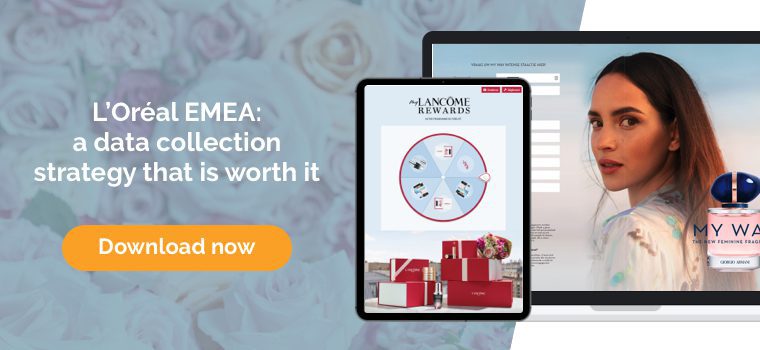

L’Oréal, the worldwide leading cosmetics brand, has recently launched their ‘Database requalification project’ to update and enrich their customer data. They’re also constituting ‘beauty profiles’ for the customers, based on the zero-party data they’ve collected (skin type, hair type, preferences, …) in order to segment their database and send relevant product and marketing messages to their customers.
Their ‘Data requalification project’ works in 3 steps:
- 📮. The customer receives an email.
- 📃. They are redirected to a form with specific fields, to gather the missing information and complete their profile.
- ⏫. This data is then immediately share and updated in L’Oréal’s CRM.
PURINA
Nestlé’s pet food brand Purina set up a series of interactive campaigns to promote their dog chewing sticks Dentastix that allowed them to collect valuable zero-party data from their consumers, such as dog name, date of birth and breed. They were then able to harness this data and to improve their brand experience, by personalising their messaging for example (they noticed an increase in email open rates of 10% when the dog’s name was featured in the subject line) and pushing the right message to their audience.
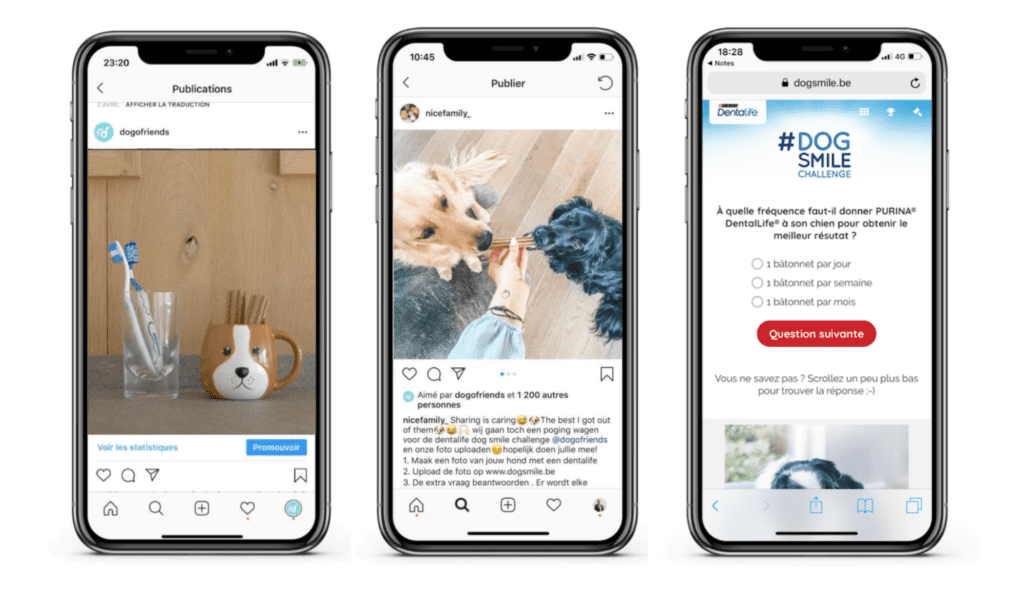

CURRYS PC
When the COVID-19 pandemic brought the world to a standstill in March 2020, UK electronic goods retailer, Currys PC, launched a personality test to help their audience to find their ideal home office accessories. Currys included a newsletter opt-in in the form part of their campaign, enabling them to send personalised offers and product recommendations to those who took part in the campaign. They also included a call-to-action at the end of the test that allowed their users to immediately shop their recommended product online.


DECATHLON
In the run up to Christmas, Belgian sports equipment retailer, Décathlon, used Qualifio Engage to set up an ideal gift guide campaign that helped their audience to choose a gift for their loved ones, or for themselves! Based on a personality test, this campaign allowed them to achieve several objectives: they were collecting valuable preference data from their audience that allowed them to personalise their messaging, they were improving their audience’s brand experience by giving them a fun and engaging moment with a useful outcome, and they were directing users to their online store.
NESPRESSO
Simple is sometimes the best way forward! And Nespresso proved this when they used a simple form for their “Gifting Friday” campaign for Black Friday. They invited shoppers to fill out a form to receive their exclusive Gifting Friday offers in advance. A quick and easy campaign to attract interesting and interested prospects.


VALENCIA CF
Spanish football club, Valencia CF, have been using Qualifio Engage to gain insightful feedback from their audience. They will regularly post product battles on their channels to collect zero-party data, gather feedback and find out what their fan base prefers. The concept is easy, fans have to choose between 2 products from their collection, the away shirt or the training top for example, and they have a chance to win one of them. All the data collected through these battles is then sent to the e-commerce manager and thanks to these inputs, they know the fans’ preferences and can adapt their stocks accordingly or launch promotions and specific actions around the most popular products.
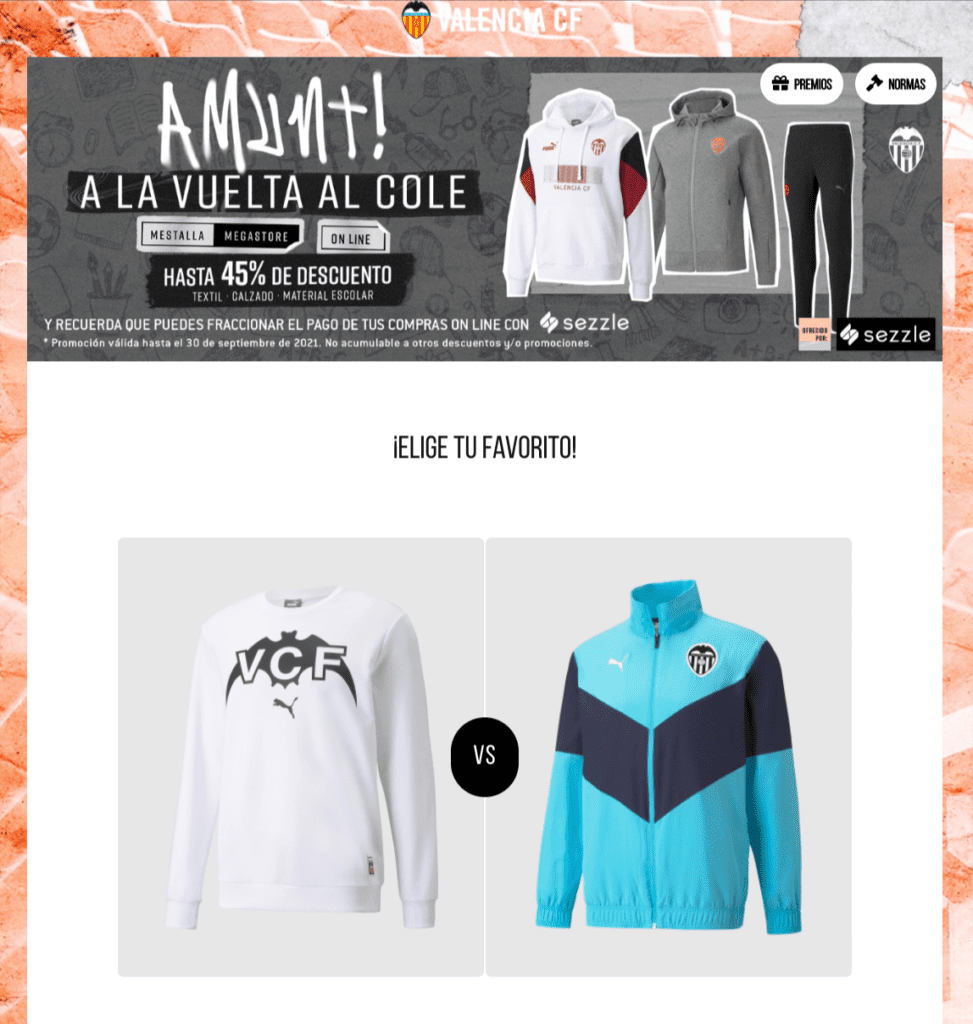

Conclusion
The digital landscape is going through a profound change, with data protection laws becoming increasingly restrictive, consumers being increasingly aware of their data, and a cookieless world on the horizon.
This means that brands are faced with a conundrum: they need to collect data from their audience as they can no longer rely on third-party cookies to reach them, but they need to be doing this in a way that is compliant and that won’t scare their consumers off and risk them not sharing their data.
At Qualifio we believe that this balance can be achieved by brands engaging with and getting to know their audience better, thanks to first-party data and zero-party data. And that interactive marketing formats, such as quizzes, polls, games and personality tests are the perfect way to do this, as they improve a consumer’s brand experience, by highlighting the value exchange, and increase the chances of them sharing their data.
Elisa’s study highlighted 3 conclusions that comfort us in our beliefs, and that can help brands understand what their audience are likely to be willing to share and what they will share:
- 📧 Consumers are more reactive to highly personalised communication, as they perceive control over the information disclosure process.
- 🔍 Transparency has a direct effect on the consumer’s intention to share their data and it improves their behavioural intentions and engagement. It is also closely linked to trust, and the combination of the two will make it easier for consumers to provide information about themselves.
- ✔️ Consumers will prefer to share sensitive and personal data if they have a sense of control, whereas if they don’t feel they have control they won’t even be willing to share basic information.
So it all boils down to how the consumer perceives the brand experience and the value exchange, and whether they have the feeling that they’re in the right conditions to be sharing their personal data. If brands can achieve this balance of providing a safe and transparent environment for their consumers, then they’ll be well on their way to building a meaningful relationship with them and having all the tools in hand to face the cookieless world.


This article was written in collaboration with Elisa Kalantarian, whose thesis “Under which conditions are consumers willing to share personal data to benefit from personalisation?” was written in June 2021 for the Solvay Brussels School – Economics & Management and the Université Libre de Bruxelles.





